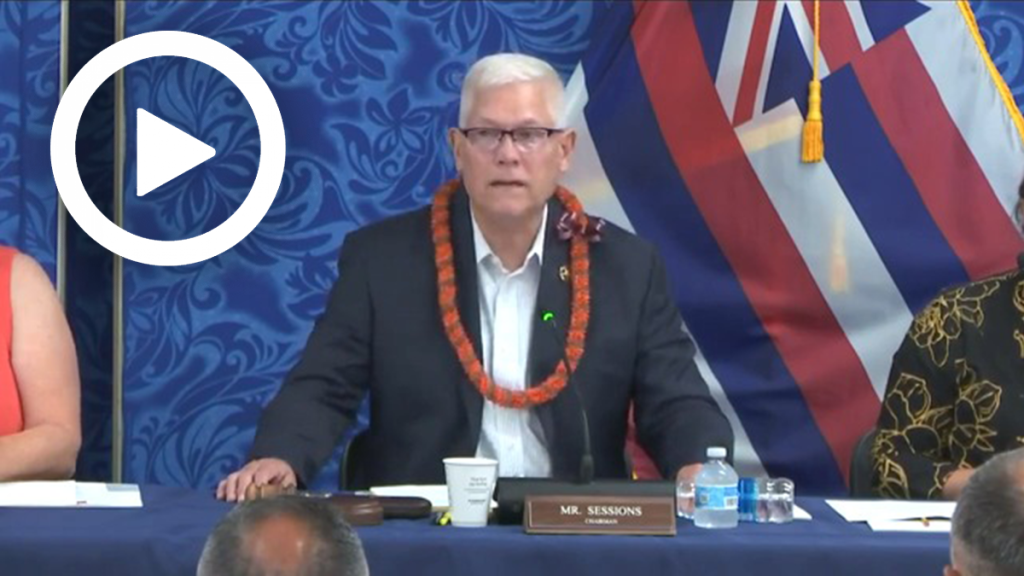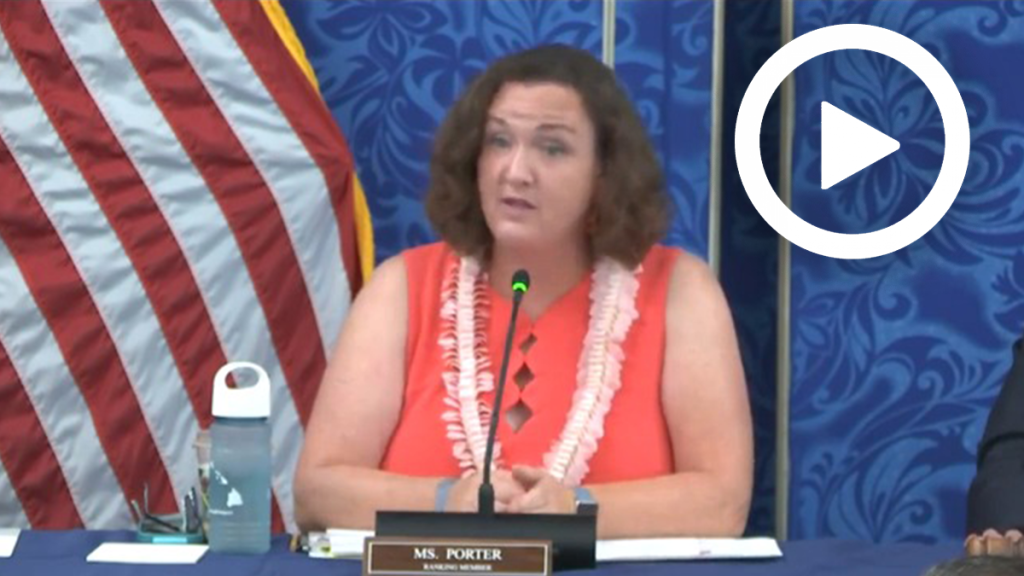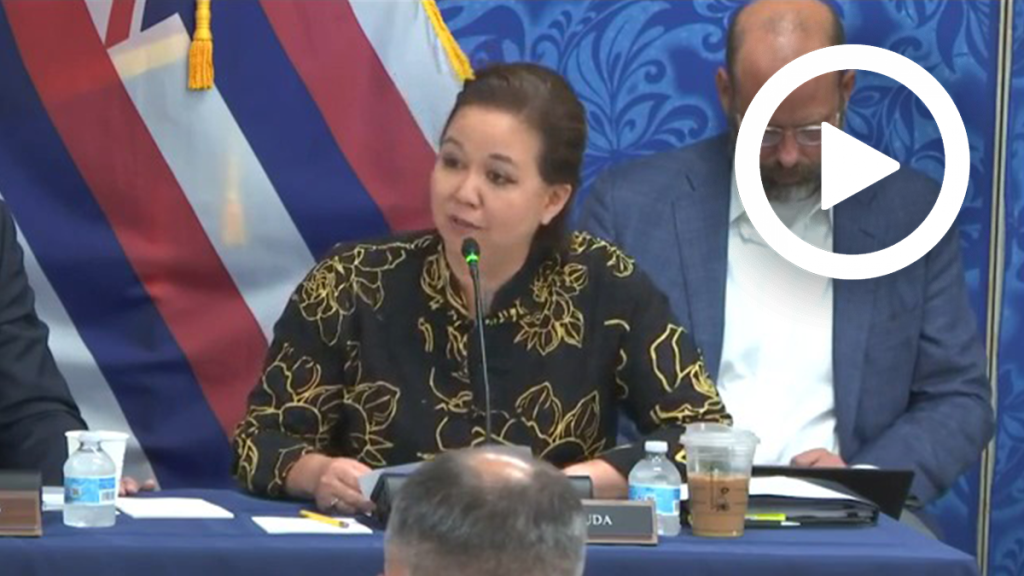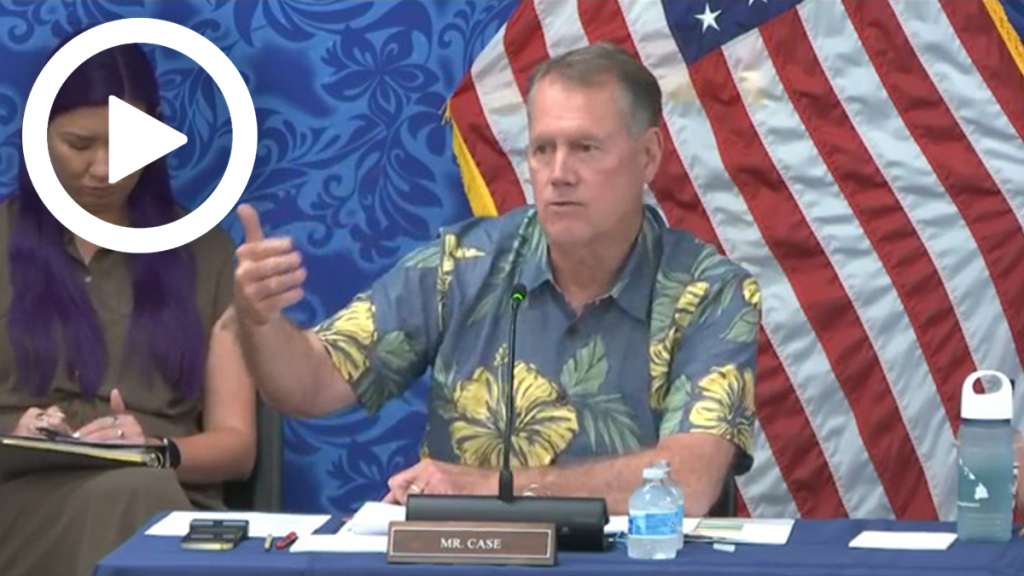Hearing Wrap Up: Maui Wildfire Response is a ‘Community-Led and Government Supported’ Coordinated Effort
WASHINGTON—The Subcommittee on Government Operations and the Federal Workforce held a hearing this week titled “Assessing the Federal Government’s Response to the 2023 Maui Wildfires” to assess federal recovery efforts in Lahaina as the community responds to the devastating 2023 Maui wildfires that claimed 102 lives with two missing. At the hearing, federal agencies and local leaders discussed challenges and successes with response to the fires and long-term recovery.
Key Takeaways:
Building trust with the local community has been essential for a successful recovery in Maui.
- Mr. Bob Fenton, Regional Administrator (Region 9) for the Federal Emergency Management Agency (FEMA) discussed the importance of incorporating cultural practices into planning and delivering support. “In coordination with our federal partners, FEMA established a cultural protocol task force to focus on three things. First, enhancing our staff’s understanding of the diverse cultural backgrounds. Second, raising awareness among affected communities about FEMA’s assistance and procedures, and three, incorporate cultural practices and considerations into the planning, implementation, and delivering of FEMA supported services, operations, and programs for Maui.”
- Col. Eric Swenson, Commander of the St. Paul District for the U.S. Army Corps of Engineers said,“Building trust with the local community and finding a suitable location for debris storage were significant challenges. Without trust, residents would be hesitant to sign up to our debris removal program. […] We built trust by using our public affairs teammates to reach across all media. By being present at weekly community meetings, and by reaching out to community elders.”
Temporary housing projects have been a priority for federal agencies while responding to the fires, yet temporary housing poses unintended consequences for the community.
- Mr. Fenton (FEMA) discussed the challenges FEMA has faced while building temporary housing. “Housing on Maui is challenging to say the least. Due to preexisting housing shortages and infrastructure limitations, locating temporary housing for displaced survivors has been a critical component of our efforts since August 2023.”
- Col. Swenson (U.S. Army Corps of Engineers) noted successes the Army Corps has had with quickly clearing debris and building temporary schools. “This last week, the Corps cleared fire debris from the last residential property, which is a massive accomplishment completed months ahead of schedule.” He added. “In six months, we, the Army Corps of Engineers, finished a temporary school, completed all residential debris removal, and are poised to complete the remainder of our work by the end of February 2025. More than that, the Corps team worked together with the people of Maui, with every team member serving as an ambassador to this community.”
- Mr. Richard Bissen, Mayor of Maui County, noted the challenges with temporary housing during his opening remarks.“Although FEMA is designed to offer temporary housing solutions for survivors, many of these options were impractical for an island community already grappling with a severe housing crisis. Additionally, FEMA’s rental assistance program posed unintended consequences negatively impacting our rental housing market island-wide, causing further distress for other Maui residents who were displaced unintentionally. Permanent housing options earlier in the response would have been ideal.”
While federal agencies have successfully provided resources to aid in recovery, as Maui looks towards the future, there is still uncertainty regarding recovery resources.
- “In short, coordinated response to the Maui wildfires has been remarkable at all levels,” Major General Kenneth Hara, Adjutant General of Hawaii, said during his opening remarks.
- Mr. Francisco Sánchez, Jr., Associate Administrator at the Office of Disaster Recovery & Resilience for the Small Business Administration (SBA) summarized the loans SBA has provided and dispersed to survivors. “SBA has provided more than 405 million dollars in loan offers. More than 90 million have been dispersed already to disaster survivors.”
- Ms. Cheree Peterson, Deputy Regional Administrator (Region 9) at the Environmental Protection Agency (EPA) discussed EPA’s work towards accomplishing the three missions designated by FEMA: Hazardous material removal, water infrastructure technical assistance, and sustainability advice during the recovery process. “…EPA has enabled water advisories to be lifted sooner, for water treatment plants to become online, and to protect segments of the water infrastructure to prevent ash and debris from flowing into salt water and fresh ground water,” she said.
- Ms. Lauren Nahme, SVP of the Maui Recovery Office for the Hawaii Community Foundation discussed concerns with resource cliffs,“…Uncertainty surrounding current and future resources and timetables is a significant factor impacting the ongoing mental health, wellbeing, and recovering of our community.” She added, “Additionally, there are very significant concerns regarding the impending resource cliffs, when FEMA and other significant resources sunset as early as February 2025 without clear alternative paths and options for families.”
Member Highlights:
Subcommitee Chairman Pete Sessions (R-Texas) asked about interagency coordination and assisting members of the community with understanding regulations and time frames during recovery.
Rep. Sessions: “These are four agencies that are represented here. That does not represent the entire United States government. There are certainly issues related to the IRS and other reporting, perhaps those who have student loans and other things that would need that output. Do you believe that they have been adequately addressed as you look across this entire process that you had help from other agencies and answered those questions?”
Mr. Sánchez (SBA): “Yes sir. I think one of the things that we learn from disaster to disaster is that if you’re one of the most impacted disaster survivors, you probably won’t file in the first thirty, sixty, or ninety days. You come in later and you’re missing paperwork, you have questions. […] We have built a strong partnership for example with Internal Revenue Service so if that disaster survivor can’t find tax records, we will go out and do that on behalf of the IRS.”
Rep. Sessions: “It is, I think, important for people to understand what the rules of the game are. How long they have, how flexible you have become in that process. […] “Do you think you have adequately brought these rules, regulations, time frames, responses, answers to a broad group of people?”
Mr. Fenton (FEMA): “I think it’s a continuing process. […] It’s a continuing education, it’s not a straight line. It’s a Venn diagram. It takes continued effort. […] I think the mayor’s advisory program is critical to bring senior leaders from the community in, how do we educate them so they carry the message.”
Subcommittee Chairman Sessions also stressed the need for the government and residents of Lahaina to come together and address the difficult – but necessary – issues that will shape what the Lahaina of the future loos like.
Rep. Sessions: “It doesn’t take a lot to have to sit here and listen and conjure up in your mind the undertaking that you’re all involved in. We heard stories of roads that were too narrow, people that were trapped, exits that did not necessarily represent an emergency may have represented daily life. I know there is an undertaking here… it is going to require a big undertaking…”
Rep. Katie Porter (D-Calif.) discussed what SBA is doing to assist and locate survivors with unfinished disaster assistance applications.
Rep. Porter: “About how many applications have you received from those affected by this disaster?”
Mr. Sánchez (SBA): “Completed applications, roughly 6,000.”
Rep. Porter: “Were there more that were started but not finished?”
Mr. Sánchez (SBA): “Yes, there were about 6,400 that were started.”
Rep. Porter: “What have you done to locate those people who started an application but didn’t finish it to try to understand why?”
Mr. Sánchez (SBA): “Sure. We have gone through our teams on the ground as we’ve researched the database who started an application but maybe didn’t finish it. We have done multiple attempts, for example we reached out just earlier this year to about 309 of those. […] At the end of the day we were able to make positive contact with about 240 of those.”
Rep. Tokuda (D-Hawaii) examined challenges with permanent and temporary housing structures.
Rep. Tokuda: “How do you get us to that permanent housing construction vs. the more temporary transitional housing that we’re seeing right now?”
Mr. Fenton (FEMA): “…I think the limitations there are one, it has to be a homeowner. It has to be uninsured. So you’re talking about a population that fits that that’s probably beneath a hundred on this. Ninety percent of the people displaced are renters here. Next, there has to be no other solutions for temporary housing, and it has to be cost effective. There are a number of other solutions here.”
Rep. Ed Case (D-Hawaii) asked Mayor Bissen about Lahaina’s long-term recovery goals.
Rep. Case: “From the very beginning, one of the big questions has been what our target at the end of the day is. What is the Lahaina that we envision and that we want to bring back to life. It may not be the same exact Lahaina as before. […] Where are you on that decision? I know it’s a complex decision for the community and for the elected leaders.”
Mayor Bissen: “The long-term recovery project is due to be out, the draft, in October. That’s the result of many, many community meetings that we’ve held and also neighborhood meetings that our office of recovery staff has been pursuing. One of the mantras we’ve had is that this would be community-led and government supported.”
READ MORE: Sessions Opens Field Hearing on Federal Response to Maui Wildfires
Click here to watch the full hearing.



